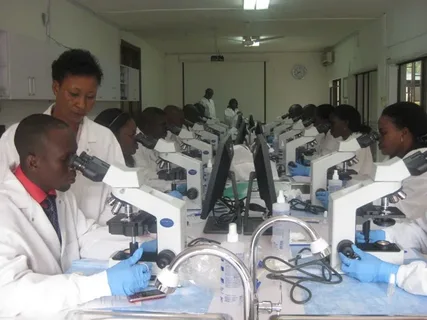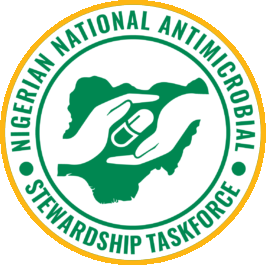
Antibiotics have saved millions of lives. Today, their power is weakening. Many infections no longer respond to the usual drugs. This growing issue affects families, clinics, and public health workers across the country.
Medical scientists and professionals in Nigeria have devoted years in the investigation of the issue. They have contributed to alteration in treatment guidelines, hospital practices, and the policies of health.
Antimicrobial Research in Nigeria is not just lab work. It now guides real decisions that protect communities. The goal is simple: keep infections under control using knowledge that works in our setting.
The Rise of Drug-Resistant Infections
Doctors in many Nigerian hospitals report that antibiotics often fail. The same pills that once cured infections now do nothing. This happens when bacteria change and stop reacting to medicine. This is called antimicrobial resistance amr occurs.
The cause is often poor drug use. People may take the wrong dose or stop treatment too early. Some buy antibiotics without seeing a doctor. In farming, antibiotics are added to feed, which spreads resistant bacteria through food.
Why This Is a Global Concern
The threat doesn’t stop at local borders. It affects global public health. These resistant strains can spread across cities and even countries. A small issue in one hospital can become a much bigger problem if not controlled.
That’s why the work of Nigerian researchers matters. Their findings guide how we use antibiotics today and how we plan for tomorrow.
A Historical Overview of Antimicrobial Research in Nigeria
The hint of resistance was observed in the 1990s. In Lagos, Enugu and Jos, hospitals started receiving patients with infections that were failing to clear despite the use of the most potent medication. Such cases raised questions among doctors about the effectiveness of common antibiotics.
This led to the first wave of Antimicrobial Research in Nigeria. Physicians, researchers, and the university personnel started taking samples and noting down outcomes. These pioneering studies were both small and eye-opening. Even the common infections were resistant to many drugs.
The Early Research Efforts (1990s–2000s)
In 1997, University of Lagos scientists did test trials of E. coli and Staphylococcus aureus. More than 60 percent of them were not sensitive to simple antibiotics such as ampicillin and tetracycline. This was a warning.
Between 1998 and 2002, more tests were done in cities like Jos, Ibadan, and Port Harcourt. Local journals published the findings. The results were similar. Drug resistance was rising fast.
This early phase of Antimicrobial Research in Nigeria helped hospitals improve treatment plans. Some stopped using older antibiotics for certain infections. Others created simple lab protocols. These steps were small, but they made a difference.
Turning Point: AMR Recognition by Federal Health Authorities
In 2005, antibiotic resistance was included in a federal public health management and policy report for the first time. This signaled a shift in national awareness. Research findings were no longer limited to labs. They were now part of national health planning.
The Minister of Health Nigeria released a publicly visible statement of the dangers of inadvertent antibiotic use. His demand toward stricter regulations accelerated investments in research and laboratory machines. By 2007, hospitals in Abuja and Kaduna received support to track resistant infections better.
Medical schools also responded. AMR topics were added to their courses. This helped prepare a new generation of doctors to understand and manage drug resistance.
Breakthroughs in AMR Research and Medicinal Plants
Studies over the last 15 years show how plants used in Nigerian homes may help fight drug-resistant bacteria. These plants are not new. Families have used them for stomach pain, fever, wounds, and more. What’s new is the scientific testing behind them.
Researchers are now measuring how these plants work on bacteria that resist drugs. Antimicrobial Research in Nigeria has made these tests more common. The findings are shared in local journals and help guide further lab studies and hospital care.
The Role of Traditional Knowledge and Medicinal Plants
A research paper on antimicrobial activity of medicinal plants was published by a team in Jos in 2011. They tested bitter leaf, neem, and garlic. The plants were used in many homes but hadn’t been tested in labs before.
The results showed these herbs killed bacteria like E. coli and Salmonella. These bacteria can cause typhoid, food sickness, and urine infections. The study linked home remedies with lab testing.
Since then, several universities have tested other herbs. Some showed strong effects on bacteria that no longer respond to common drugs.
Key Contributors: Nigerian National Antimicrobial Stewardship Taskforce (NNAST)
The formation of the Nigerian National Antimicrobial Stewardship Taskforce (NNAST) provided many research programs with structure. This task force draws scientists, policy teams and public health workers together. Searching down drug resistance and educating physicians on the safe use of antibiotics is their objective.
Antimicrobial Research in Nigeria improved once there was a clear system to collect and share results. Hospitals began reporting infection data in a more organized way. NNAST made this process easier. They also trained medical staff in labs across several states.
Role in Policy Development
Between 2017 and 2019, NNAST led a major survey across public hospitals. They gathered lab data, pharmacy reports, and staff input. Abuja, Lagos, and Kano were part of the pilot.
The results were demonstrated in the 2020 Lagos Health Conference. Many hospitals got a national view of AMR data together in one location for the first time. It helped policy makers understand what doctors and nurses face every day.
Nigerian National Antimicrobial Stewardship Taskforce (NNAST) also created reports that shaped hospital policies on drug use. Some hospitals added review steps before giving out strong antibiotics. This small change helped lower the risk of resistance.
National Action Plan on Antimicrobial Resistance
Nigeria launched its first national action plan on antimicrobial resistance in 2017. The plan came after years of amr research showed that drug resistance was hurting health outcomes. The five-year roadmap set goals for tracking, educating, and managing antibiotic use.
The plan focused on five key areas: awareness, research, infection control, drug regulation, and environmental safety. Each part was designed using Nigerian data from earlier studies. Hospitals, labs, and teaching institutions worked together to carry it out.
The action plan also called for stronger links between human and animal health. This helped track resistance not only in clinics but also in farms and markets. Many antibiotics used in animals are the same ones used in people. This link matters more than most think.
Five Pillars of the National Strategy
The Minister of Health Nigeria supported the national plan from the start. His office helped provide funding and got support from international groups like WHO and CDC.
The five pillars of the plan are:
- Raise public awareness on antibiotic misuse
- Improve lab testing and data collection
- Promote hygiene and infection prevention
- Use antibiotics only when needed
- Invest in local research
Each goal had timelines and partners. This made the plan more useful in real-world settings. It also showed the value of science in shaping public health decisions.
Challenges Facing Antimicrobial Resistance Research in Nigeria
Progress continues, but Antimicrobial Research in Nigeria still faces serious challenges. Limited lab access, low public understanding, and poor funding slow down efforts. Many clinics cannot test for resistance properly.
Antimicrobial resistance research also needs stronger support from public institutions and the health sector.
Funding, Training, and Public Engagement
A 2021 report from NAFDAC and NCDC highlighted key concerns. Labs lack tools. Staff lack proper training. The public often misuses antibiotics.
Here are the biggest challenges:
- Most hospitals lack reliable lab equipment
- Many health workers have not been trained on AMR response
- Data sharing between institutions is still limited
- Public awareness about antibiotic misuse remains low
- Some patients demand antibiotics without proper tests
- Cultural beliefs often favor self-medication
- Research programs often rely on short-term funding
- Local studies may not reach national policymakers
Fixing these issues will help Antimicrobial Research in Nigeria grow and protect more lives.
Conclusion
Antimicrobial Research in Nigeria has moved from small labs to national strategy. It now shapes hospital decisions, health policy, and even farming rules. The progress is real, though many problems remain.
Support for research, stronger labs, and public awareness will help the country move forward. Nigeria is not just reacting to AMR. It is helping lead the way.
FAQs
What is the goal of Antimicrobial Research in Nigeria?
The goal is to reduce drug-resistant infections, inform health policies, and ensure safer use of antibiotics.
What plants are studied in Nigeria for antimicrobial properties?
Neem, bitter leaf, and moringa are widely studied in various research papers on antimicrobial activity of medicinal plants.
Who leads AMR research and policymaking in Nigeria?
The Nigerian National Antimicrobial Stewardship Taskforce (NNAST), supported by the Minister of Health Nigeria.
What is the National Action Plan on Antimicrobial Resistance?
It’s Nigeria’s official plan launched in 2017 to monitor, control, and study AMR across sectors.
How is antimicrobial resistance affecting public health in Nigeria?
It causes prolonged illnesses, raises treatment costs, and weakens confidence in available drugs.


